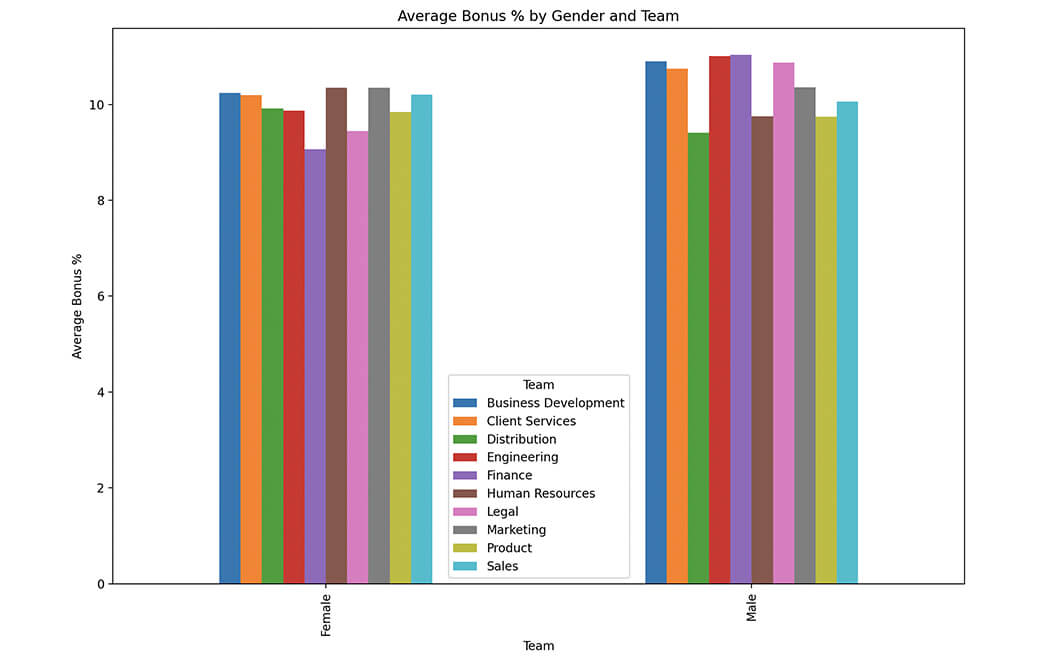In the ever-evolving landscape of artificial intelligence and data analysis, a groundbreaking Python library has emerged: PandasAI. This powerful tool seamlessly integrates generative AI capabilities into pandas for conversational data analysis and dataframes. Pandas for data analysis empower scientists and data enthusiasts to unlock new insights and possibilities in their data-driven endeavors. This article explores the realm of AI data analysis, data visualization, data cleaning, and much more, leveraging the PandasAI library with real-world examples and transformative use cases that make it an invaluable asset for any data-driven project.
Understanding Pandas for Data Analysis: Merging Generative AI and Large Language Modules (LLMs)
PandasAI, an extension of the renowned Pandas library, bridges the gap between generative AI and data analysis, offering a comprehensive solution for automating AI data analysis tasks, generating synthetic datasets, and enhancing decision-making processes. Let’s dive into the key features and benefits of this innovative Python library:
1. Effortless AI Data Analysis Workflow with PandasAI
PandasAI simplifies the AI data analysis workflow by providing efficient functions and methods that facilitate data manipulation, cleaning, and transformation. This intuitive interface eliminates the need for complex coding, allowing analysts to work seamlessly with large datasets and perform intricate operations effortlessly. With Pandas new library, AI data analysis becomes a breeze, saving valuable time and effort.
2. Generative AI Capabilities for Synthetic Data Generation
One of the standout features of PandasAI is its ability to generate synthetic datasets using advanced generative AI techniques. This functionality proves invaluable in scenarios where access to sensitive or limited data is restricted. Researchers and developers can leverage PandasAI to create artificial data that closely resembles real-world distributions and patterns. This capability enables them to test algorithms, build models, and validate hypotheses in a controlled environment.
3. Accelerating Decision-Making with Simulations
PandasAI empowers decision-makers by providing simulations that offer insights into potential outcomes. By manipulating data and introducing variables, the library allows users to explore various what-if scenarios and evaluate the impact of different strategies. This facilitates informed decision-making by simulating real-world scenarios and identifying optimal courses of action.
4. PandasAI for Data Cleaning and Preprocessing
Data cleansing and preprocessing are critical steps in any data analysis pipeline. PandasAI automates these processes, making data-cleaning tasks such as missing value imputation, outlier detection, and feature scaling more efficient. AI for data cleaning using the cutting-edge Pandas library can intelligently identify and rectify anomalies, allowing analysts to focus on higher-level analysis tasks and derive meaningful insights from their datasets.
Request a Data Analysis Consultation
Ready to implement Pandas AI in your projects? Request a personalized data analysis consultation to explore how generative AI in Python can elevate your data-driven decision-making.
Usage & How it Works
Gone are the days of tediously coding complex queries for data analysis tasks. With PandasAI, your AI data analysis experience is about to transform. PandasAI empowers you to have interactive conversations with your data, enabling you to extract valuable insights effortlessly. Let’s delve into some practical examples to witness the remarkable capabilities of Pandas for data analysis and how it can revolutionize your data analysis workflow.
Imagine you have a dataset containing employee records, including their names, genders, teams, positions, and salaries. To explore the possibilities, you can download the sample dataset by clicking on the following link: Download CSV
Discovering the Highest-Paid Employees in Each Team
With PandasAI, identifying the highest-paid employees within each team becomes a breeze. Leveraging its conversational capabilities, you can simply ask PandasAI to find the employees with the highest salaries in each team. Take a look at the code snippet below:
# Importing the pandas package
import pandas as pd
from pandasai import PandasAI
# Creating a DataFrame from the CSV file
df = pd.read_csv("employees.csv")
# Setting up the OpenAI token
from pandasai.llm.openai import OpenAI
llm = OpenAI(api_token="YOUR-TOKEN")
pandas_ai = PandasAI(llm, verbose=True)
# Writing the question
response = pandas_ai(df, "Display the highest-paid employees with their names, teams, and salaries within each team.")
print(response)
In response, PandasAI will present you with a DataFrame containing the names of the highest-paid employees within each team:
Answer:
Highest paid employee in Business Development team is Angie Baird with a salary of 147417
Highest paid employee in Client Services team is Valery Olsen with a salary of 147183
Highest paid employee in Distribution team is Gilberto Kelly with a salary of 149105
Highest paid employee in Engineering team is Rachel Stanley with a salary of 147362
Highest paid employee in Finance team is Brittany Simpson with a salary of 149908
Highest paid employee in Human Resources team is Sam Faulkner with a salary of 149903
Highest paid employee in Legal team is Baylee Casey with a salary of 148985
Highest paid employee in Marketing team is Jerome Miranda with a salary of 149456
Highest paid employee in Product team is Tyrone Arroyo with a salary of 149684
Highest paid employee in Sales team is Jadiel Sutton with a salary of 149654
---
Conversational answer:
Based on the data provided, we can determine the highest paid employee within each team.
In the Business Development team, Angie Baird has the highest salary of 147417.
Valery Olsen is the highest paid employee in the Client Services team with a salary of 147183.
Gilberto Kelly has the highest salary of 149105 in the Distribution team.
Rachel Stanley is the highest paid employee in the Engineering team with a salary of 147362.
Brittany Simpson has the highest salary of 149908 in the Finance team.
Sam Faulkner is the highest paid employee in the Human Resources team with a salary of 149903.
Baylee Casey has the highest salary of 148985 in the Legal team.
Jerome Miranda has the highest salary of 149456 in the Marketing team.
Tyrone Arroyo is the highest paid employee in the Product team with a salary of 149684.
Lastly, Jadiel Sutton has the highest salary of 149654 in the Sales team.
Performing Complex Queries
PandasAI doesn’t restrict you to simple queries. Its capabilities extend to performing complex analyses as well. Suppose you want to understand the difference in average bonus percentages between teams with and without senior management employees. With PandasAI, you can achieve this effortlessly by posing a question:
response = pandas_ai(df, "How does the average bonus percentage differ between teams with and without senior management employees?")
Within moments, PandasAI will provide you with the difference in average bonus percentages:
When comparing teams with and without senior management employees, the average bonus percentage differs slightly. Teams with senior management employees have an average bonus percentage of 9.97%, while teams without senior management employees have an average bonus percentage of 10.41%.
Effortless Data Visualization
Visualizing data is crucial for uncovering trends and patterns effectively. PandasAI simplifies the process of creating visualizations. You can ask PandasAI to generate a bar graph that displays the average bonus percentage for male and female employees by team. Here’s an example:
pandas_ai( df, "Plot the bar graph that displays the average bonus percentage for male and female employees by team")
By formulating your request, PandasAI will generate the desired bar graph, providing you with a clear visualization of the distribution of bonuses for male and female employees across teams.

The examples presented here provide just a glimpse of PandasAI’s capabilities. This library offers a wide range of functionalities, enabling you to perform complex analyses and effortlessly visualize your data. For further inspiration, be sure to explore the examples directory, where you’ll find additional use cases showcasing the full potential of PandasAI.
Conclusion
Pandas AI represents a significant breakthrough in data analysis by seamlessly integrating generative AI capabilities with the popular Pandas library. Its streamlined data analysis functionalities, coupled with the power of generative AI, open up new possibilities for real-world applications across various industries. By leveraging Pandas AI, data scientists, analysts, and decision-makers can unlock valuable insights, streamline processes, and drive innovation. Embrace the game-changing capabilities of Pandas AI today and revolutionize the way you work with data.
Need to build an enterprise grade Data-driven software?
We replace old enterprise implementations with the latest technology, custom built for better scale, security, usability and value.
 Web Applications
Build web apps using cutting-edge technology
Web Applications
Build web apps using cutting-edge technology
 Business Intelligence Apps
Empower your business with fast & actionable BI Apps
Business Intelligence Apps
Empower your business with fast & actionable BI Apps
 Mobile Applications
Build cross-platform apps for iOS and Android devices
Mobile Applications
Build cross-platform apps for iOS and Android devices
 Internet of Things Apps
Streamline your operations with cloud-based IoT apps
Internet of Things Apps
Streamline your operations with cloud-based IoT apps
 AI Products
Unlock the power of AI & ML with our expertise
AI Products
Unlock the power of AI & ML with our expertise
 Minimum Viable Product (MVP)
Mitigate risks & accelerate your project development
Minimum Viable Product (MVP)
Mitigate risks & accelerate your project development
 Enterprise Software
Build custom enterprise solutions for your business
Enterprise Software
Build custom enterprise solutions for your business
 Software as a Service (SaaS)
Scale your business with ease and cost-efficiency
Software as a Service (SaaS)
Scale your business with ease and cost-efficiency




